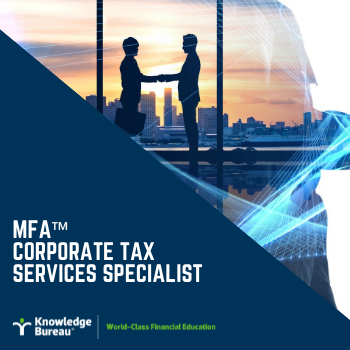Eligibility for Tax Support for Business Investments: What does it mean for Small Businesses?

José L. Riquelme, CPA, CGA
How do you tap into the new $1.5 million tax break for businesses and who is eligible? It turns out most business owners may be. Building on last week’s article, “Complexity: Consequences of Tinkering with the CCA System”, we’ll expand on the details of the plan from the Federal Government to boost business investment as a measure to restart the economy as Covid-19 dwindles. Here are the details.
Who is eligible?
The program is called “Eligibility for Tax Support for Business Investments”. As originally conceived during the 2021 Budget, this program was targeted to Canadian Controlled Private Corporations (CCPCs) and as of February 4, 2022, the Department of Finance expanded its eligibility to unincorporated businesses (sole propriet ors and most partnerships – multi-tiered partnerships would be excluded).
ors and most partnerships – multi-tiered partnerships would be excluded).
What’s the benefit?
The program allows for the immediate expensing of up to $1.5 million per year in certain property that would otherwise have to be subject to the regular tax depreciation rules (Capital Cost Allowance – CCA). For CCPCs, the immediate expensing is available for certain assets acquired on or after April 19, 2021 provided they become available for use before January 1, 2024; this $1.5 million allowance is to be shared amongst associated members of a corporate group. If a CCPC (or a corporate group) spends more than $1.5 million in qualifying assets, the Company is allowed to choose which assets will be subject to immediate write-off.
Unincorporated businesses will be permitted the $1.5 million expenditure allowance if incurred on or after January 1, 2022 provided the assets are available for use before 2025 for sole proprietorships and partnerships comprised of individuals or before 2024 for other partnerships (that include corporations).
This program will mostly benefit businesses that are capital intensive and intend to hold the assets for a medium to long-term such as manufacturing and processing industries. As our colleague Walter Harder warned that these changes may “encourage certain activities within the marketplace.
But they may not serve the purchaser well, if the net after-tax outcomes of the acquisition and disposition of the assets, as well the available write-off throughout the lifetime of the ownership period are not understood and used to the taxpayer’s best advantage.” Service businesses and those who intend to dispose of the assets in a short period of time will see a much-reduced advantage.
Eligible Assets
Such a generous immediate expensing allowance needs limits. Most properties are allowed except for the following long-lived CCA Asset Classes:
-
1 – Residential Buildings
-
6 – Commercial Buildings
-
14.1 – Intangible assets such as Goodwill, Customers’ Lists, etc.
-
17 – Roads
-
47 – Equipment used in Petroleum and Natural Gas Activities
-
49 – Pipelines and storage tanks for oil and gas industry
-
51 – Pipelines and ancillary equipment
Planning Opportunities
Sole-proprietorships and partnerships (comprised of individuals) that are capital intensive, may look into maximizing the deductions and create non-capital losses that can immediately reduce other sources of income (never below the Personal Basic Amount) or can be either carried back up to three years or forward indefinitely. This differs from CCPCs since the non-capital losses can only be carried back three years and forward for 20 years. These losses are trapped in the corporation; hence, they cannot be applied against other sources of income of the shareholders.
Whether the intention is to hold the assets for the long, medium, or short-term, careful planning needs to be made if the CCPC already has non-capital and/or capital losses as these losses may lessen the adverse effects of CCA recapture if the assets are sold.
As with any investment decision, tax considerations are important; however, there are multiple factors that need to be taken into account. We just don’t invest because of a tax deduction, we invest because of the growth prospects, higher cash flows, and the pursue of profits. Now, if we have an added tax incentive to do so faster and better, the change is welcomed!
